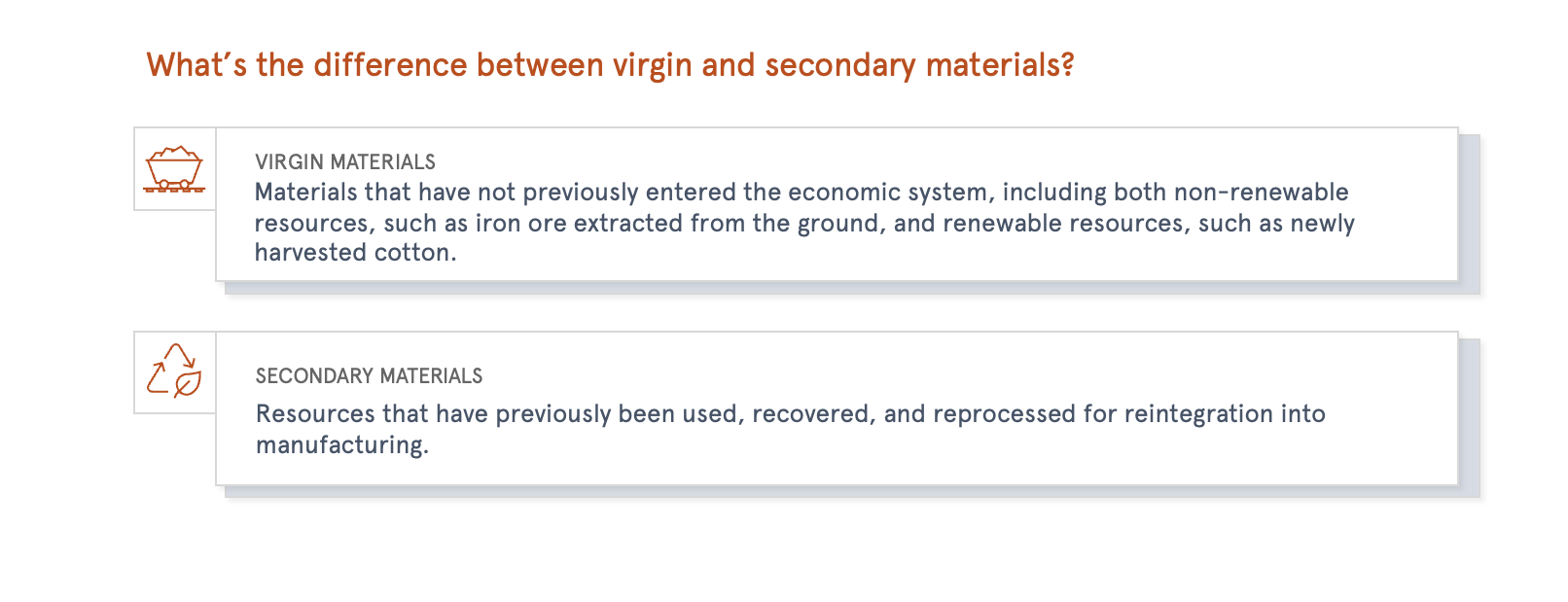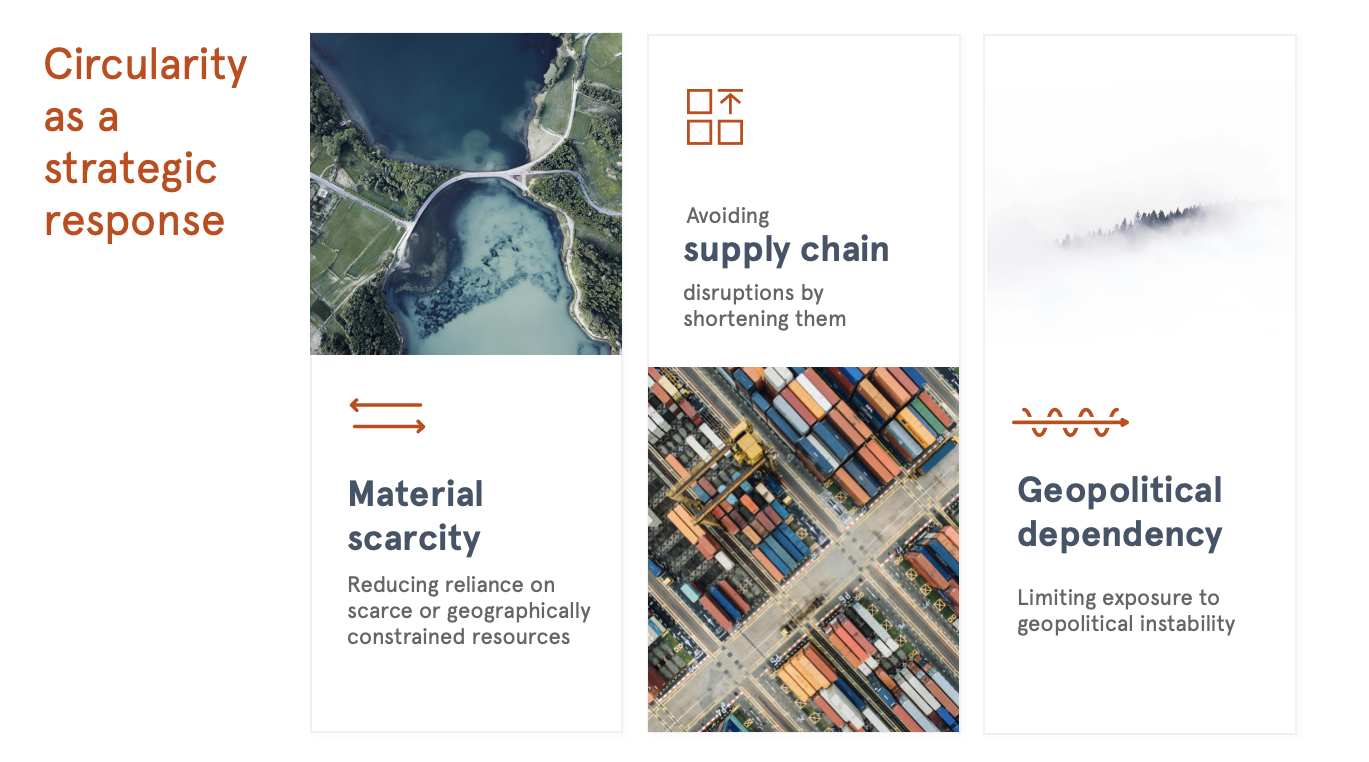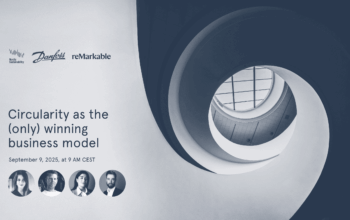
The recently published Circularity Gap Report 2025 reaffirms a worrying trajectory: global circularity has dropped to 6.9%. Yet, amid this decline lies an enormous opportunity. In Europe alone, circular economy could enhance resource efficiency by 3% by 2030, translating into €600 billion in annual cost savings and €1.8 trillion in broader economic benefits. Faced with geopolitical instability, resource scarcity and evolving regulations, strategic businesses are turning to circularity. This article explores how companies across sectors are reimagining how value is created through circular design and innovative business models.
While awareness of circularity is increasing, the global economy still heavily relies on linear models. Most materials entering the economy are only used once before being discarded, and the share of secondary material use is growing only gradually. This cycle of extraction and disposal contributes to around half of global greenhouse gas emissions and over 90% of biodiversity loss and water stress.
Therefore, improving circularity addresses these urgent environmental issues while offering a practical path forward.

Circular product design delivers cost savings, resilience and innovation
The current international context, marked by geopolitical tensions, resource constraints, and legislative instability, has also strengthened the case for circularity, pushing businesses to rethink how they source and produce.
Circularity is gaining traction as a strategic response, helping companies reduce risks in supply chains by shortening them, decreasing dependence on authoritarian regimes, and limiting exposure to scarce or geographically concentrated resources.

However, the benefits of circular design go far beyond risk reduction. They represent a great opportunity for companies in terms of innovation, resilience, and profitability. Circular design drives creative solutions by reducing costs associated with material consumption through modularity, multi-functionality, and durability. It also encourages a shift to regenerative or bio-based materials, positioning businesses at the forefront of sustainable transformation.
Circular strategies are gaining ground
More businesses are turning to circular strategies to reshape value creation. Moving beyond traditional linear models of take–make–waste, circularity offers a way to decouple growth from resource use by embedding longevity, reuse, and regeneration into products and systems.
These strategies are already demonstrating how circularity can drive tangible economic profits by enhancing competitiveness, reducing costs, opening new revenue streams, and building resilience in volatile markets.
Scaling circularity in practice
As a response to steel and fuel price volatility, Maersk has adopted a cradle-to-cradle approach in its construction process to allow for high-quality recycling from the outset. Between 2017 – 2024, the company has recycled 17 vessels, contributing to the decarbonisation of the global steel value chain by leveraging retiring assets.
Modularity in circular design means creating products from interchangeable, easily replaceable parts to enable repair, upgrade, and reuse instead of full replacement.
The Dutch company Ahrend manufactures office furniture whose parts are assembled in sequential stages. This facilitates both maintenance and updating with new parts, thus maximising the value incorporated into products, components, and materials over time.
Transforming business models through circular approaches
Many companies are beginning to adopt the circularity-as-a-service approach to open up alternative revenue streams and lay the foundation for reinventing their business models around circular economy principles.
Ahrend has not only adopted circular design strategies, but has also taken it a step further by transforming its business model, moving away from a traditional transactional approach to ensure that the benefits of extending the useful life of furniture can be realised. The company has achieved this through a Furniture-as-a-Service model, in which the company retains ownership of the furniture. This not only preserves the materials and resources incorporated but also offers customers greater operational and financial flexibility.
IKEA has rolled out buy-back and resale programmes in multiple countries, allowing customers to return used furniture for refurbishment and resale. This approach not only supports IKEA’s ambition to become a fully circular business by 2030 but also creates a clear alternative revenue stream, while encouraging customers to re-engage with the brand.
Finally, some companies are building entire business models around circularity. Vinted, a leading online marketplace for second-hand fashion, exemplifies circularity as a business model. By enabling peer-to-peer resale at scale, Vinted generates revenue through commissions while facilitating extended product lifespans and reduced demand for new clothing production.
Want to get started on circularity?
Companies across industries are finding new ways to integrate circularity into their operations. While global circularity is still far from where it needs to be, these examples offer a prompt for reflection on how mounting pressures can lead businesses to rethink how value is created – and succeed.
At Nordic Sustainability, we turn ambition into action and support companies in making circularity a practical, profitable part of the strategy. Get in touch with our Strategy Associate Team Lead, Franziska Matthaei, to explore how circular design can give your business a lasting edge.
References
CGR, 2025. Circularity Gap Report.
EMF, 2021. Bringing office furniture full circle: Ahrend.
EMF, 2021. Online marketplace and community for fashion items and more: Vinted.
EMF, 2021. Using Product Passports to improve the recovery and reuse of shipping steel.
European Commission, 2019. The European Green Deal.
IKEA, n.d. Our circular agenda.
Maersk, 2024. Annual Report 2024.
Viessman Climate Solutions, n.d. Viessman Climate Strategy
More resources
EMF, 2021. Examples of circular economy in business practices.




